You may be familiar with what QR Codes are.
They are among the most popular tools bridging the gap between the physical and digital realms.
You don’t need to learn rocket science to create one for yourself. This is how you can create your QR Code.
But as a marketer, you might want to create personalized QR Codes in sync with your brands.
So how would you do that?
Enter Custom QR Codes.
Unaware of them? Don’t worry! Let’s take a deep dive and learn how to make a custom QR Code.
A. What is a Custom QR Code
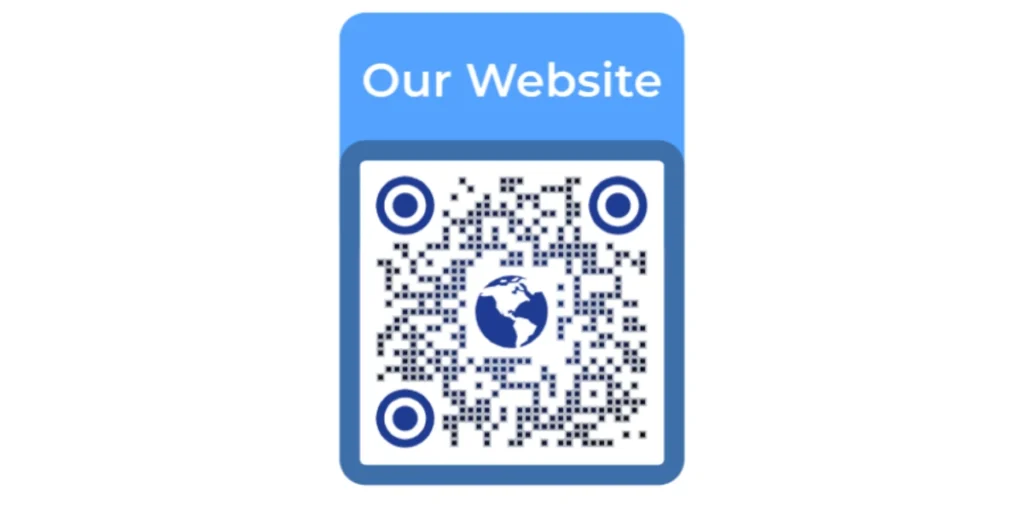
A custom QR Code refers to a Quick Response (QR) Code that has been modified or personalized beyond its standard black-and-white appearance.
Standard QRs are typically black squares arranged on a white background, but custom QRs allow for various design modifications to better suit branding, aesthetics, or specific use cases.
Here are some common elements that can be customized in a QR Code:
1. Color
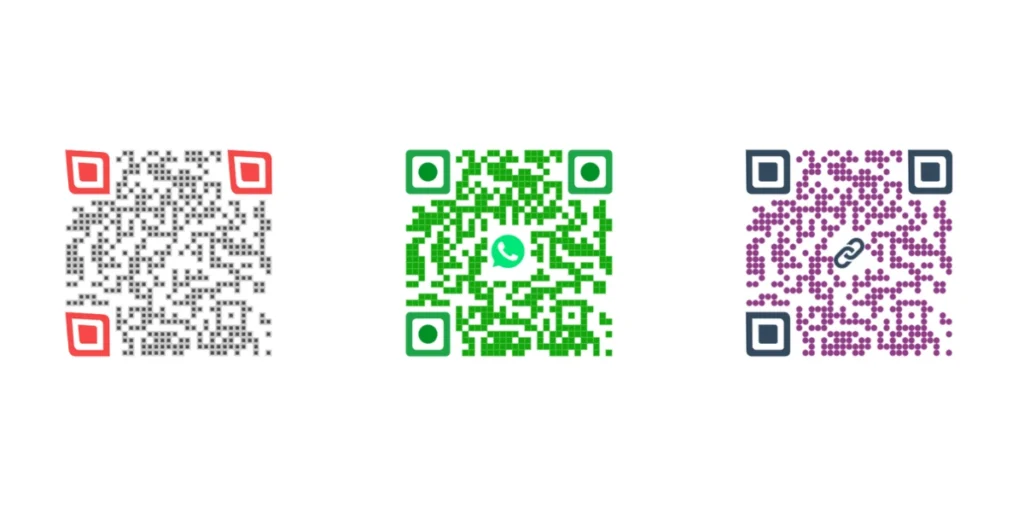
The color of the QR Code’s squares (modules) and the background can be customized. This customization can align the QR Code with a brand’s color scheme or simply make it more visually appealing.
Learn everything about colored QR Codes
2. Logo integration

Custom QR Codes can include a company or brand logo within the code itself. This is done carefully to ensure that the QR Code remains scannable and that the embedded logo does not interfere with the code’s functionality.
3. Shape and style
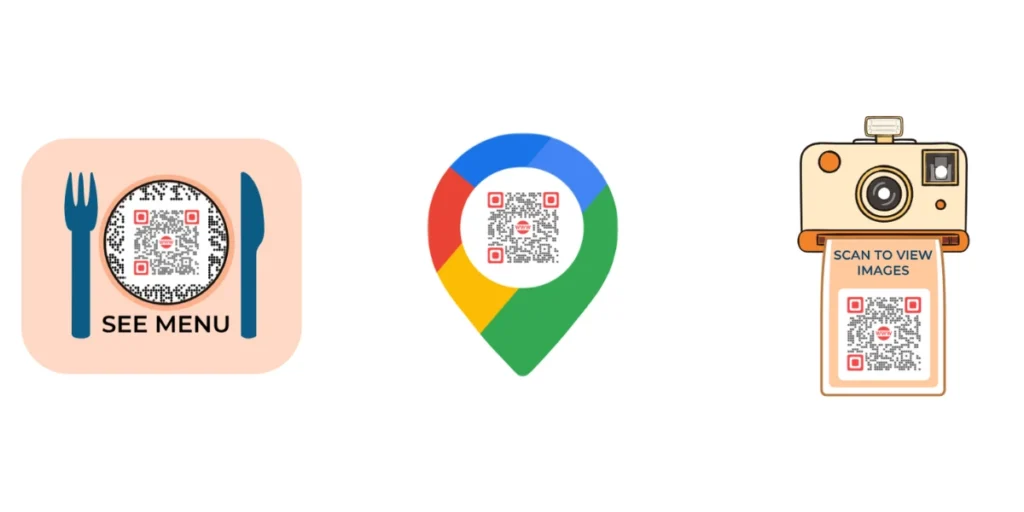
The traditional square shape of a QR Code can be modified to include rounded corners or take on a different shape altogether. Stylistic elements can be added to make the QR Code visually distinctive.
4. Background and foreground
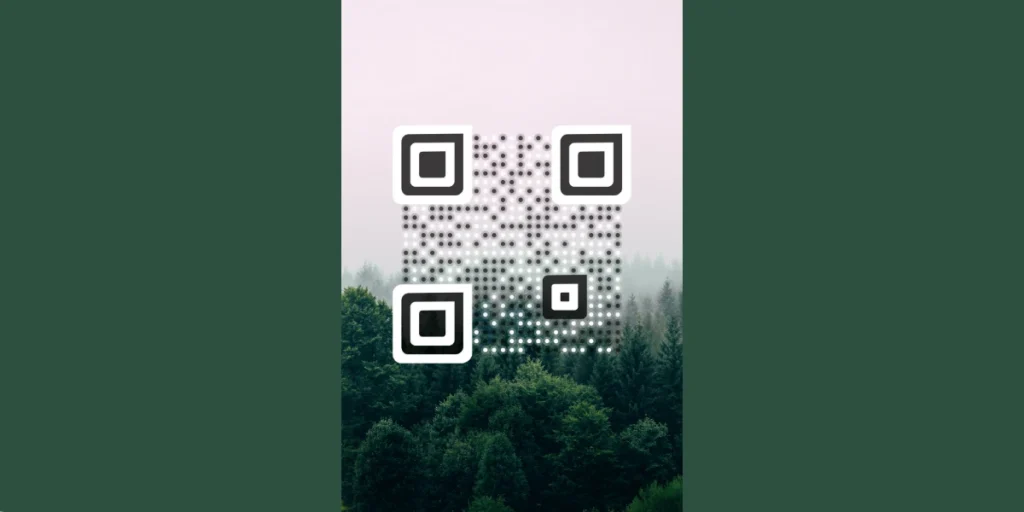
The background and foreground elements of a QR Code can be adjusted. This customization allows for greater flexibility in integrating the QR Code into various design contexts.
Customizing QR Codes goes beyond altering their appearance; it can also involve encoding different types of information, such as URLs, text, contact details, or other data, depending on the intended use.
Learn all about call to action QR Codes
Custom QR Codes are often used in marketing materials, product packaging, business cards, and other contexts where a branded and visually appealing QR Code can enhance recognition and engagement.
However, it’s crucial to strike a balance between customization and maintaining the QR Code’s functionality, ensuring that it remains scannable by a variety of devices and QR Code readers.
Generate a QR Code For Your Unique Case
START TODAY!
B. Reasons to use a custom QR Code
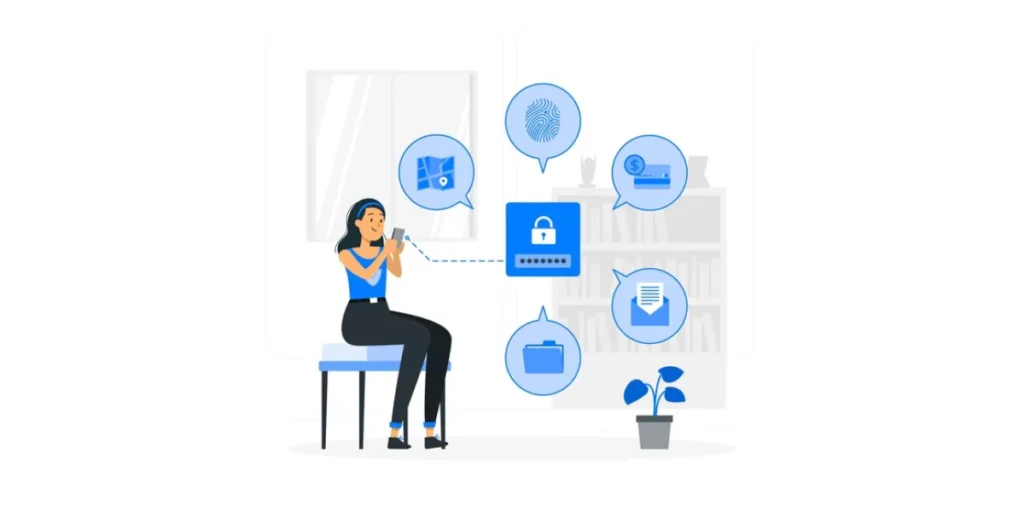
Using Custom QR Codes offers several advantages in various contexts, primarily driven by branding, aesthetics, and improved user engagement.
Here are some reasons why there is a need to use custom QR Codes:
1. Branding and identity
Brand consistency: Custom QR Codes allow businesses to maintain brand consistency by incorporating brand colors, logos, and other visual elements into the code. This helps in reinforcing brand identity and making the QR Code instantly recognizable.
2. Enhanced aesthetics
Visual appeal: Customization enables the creation of visually appealing QR Codes that can be integrated seamlessly into marketing materials, product packaging, or promotional items. This can attract more attention and make the QR Code more memorable.
Learn all about QR Code frames
3. Increased recognition
Stand out from the crowd: In a sea of standard black-and-white QR Codes, a custom-designed QR Code stands out and is more likely to capture the attention of users. This increased recognition can lead to higher engagement.
Also read: White Label QR Code generator
4. Versatility and contextual integration
Tailored for specific use cases: Custom QR Codes can be tailored for specific campaigns, events, or product launches. The ability to adapt the QR Code to different contexts makes it a versatile tool for communication.
Also read: How graphic designers can use QR Codes
5. Marketing and promotions
Promotional campaigns: Custom QR Codes can be used in promotional campaigns to create a visual connection with the marketing message. They can be integrated into advertisements, posters, and other materials to drive user interaction.
6. Unique design elements
Creative expression: Custom QR Codes allow for creative expression through the incorporation of unique design elements, such as shapes, patterns, and stylistic features. This can make the QR Code more interesting and memorable.
Learn all about personalized QR Codes
7. Embedding additional information
Beyond standard data: Custom QR Codes can be designed to encode not just basic information like URLs but also additional details, such as contact information, social media links, or product details, depending on the intended use.
Learn all about QR Code templates
8. Event and product branding
Event marketing: For events, conferences, or product launches, custom QR Codes with event branding can be used on tickets, badges, or promotional materials. This creates a cohesive and immersive experience for attendees.
Learn all about making QR Codes in this ultimate guide.
C. How to make a custom QR Code

Now that you know the reasons for using a custom QR Code, let us know how to create one.
In this guide, we’ll be using the Scanova QR Code generator, Here’s why:
Using Scanova’s QR Code generator, here’s how to do it:
1. Go to Scanova and click on Create QR Code
2. Select the QR Code category as per your need such as Website URL, Google Maps, Social Media, and Vcard Profile
For demo purposes, say you want to create a Website URL QR Code. Select Website URL QR Code from the list of QR Code categories.
3. Enter the URL of your website and click Continue
4. On the page that loads, name the QR Code and click Create QR Code
5. Next, you’ll see the preview of the QR Code along with the Edit Design option. You can use it to customize your QR Code
Once you click on it, you will see two design options: Custom Logo and Custom Background.
To create a Custom QR Code design with a Logo in the center:
i. Click on the Customize Logo Design option on the ‘Choose Design Type’ window. This will take you to the designing tool where you can customize your QR Code by adding a logo, changing color, pattern, and background color
ii. At first, the templates tab will open by default
iii. You can go to the Logo tab where you’ll see two logo options:
Add New Image as logo
Click this option to upload your logo image in PNG, JPG, or JPEG format. The maximum size of the logo image to be uploaded here is 5 MB.
After uploading an image, you’ll see these design options:
-Size: It allows you to increase or decrease the size of your logo within the QR Code
-Remove Blocks Around Logo: If you turn it on, it will remove the data modules around your QR Code
–Stroke: It allows you to add padding to the uploaded logo image. This way, you can clearly distinguish the logo from the data modules. You can also change the stroke color as per your wish
Note: The stroke feature only works with SVG images.
Add text as a logo option
Click this option to add text as a logo. Here you can change the text box size, change color, and font of the text along with options such as bold and italics.
iv. In the Eyes tab, you can change the pattern and color of the eyes of the QR Code. It even allows you to change the color of both outer and inner eyes separately
v. In the Data tab, you can change the pattern and color of data modules. You can also choose a gradient to be added to your data modules
Changing the background color
vi. In the Background tab, you can change the color of the background
Note: Make sure there is enough contrast between the QR Code and its background. It is essential for its scannability.
vii. In the Error Correction tab, you can select the level of error correction for your QR Code. Note that if you have added a logo, an appropriate level of error correction will be chosen automatically to ensure good scannability
Add QR frame
A QR frame seamlessly integrates into your creative designs and captures the audience’s attention.
Moreover, it frequently includes a call-to-action (CTA) to inform your audience about the functionality of the QR.
viii. Locate the “Edit Design” button positioned beneath the QR on the right side. Click on it to reveal two design alternatives. Opt for the “Custom Logo” option.
ix. On the ensuing screen, you will find several tabs allowing you to add a logo, modify eyes, adjust Data, and edit the background. Within these options, you’ll also see the “Frame” option.
x. Select your preferred design from the “Suggested” or “All” and choose one according to your preference.
6. Once you finalize the QR Code design, click Done Editing. Go ahead to Download your QR Code. A pop-up will appear prompting you to sign-up for a 14-day free trial. Note that you’ll need to sign-up to be able to download your QR Code image
7. Once you sign up, proceed to Download your QR Code. You’ll be asked to specify the size and format of the QR Code image to be downloaded. Once you enter these details, click Export
Your QR Code will be downloaded. You should download the image in vector format (SVG, EPS) if you want to add your QR Code to print material.
Always make sure that you scan the QR Code with a QR Code scanning application before printing it on your campaign material.
Also read:
Generate a QR Code For Your Unique Case
START TODAY!
D. Where to use custom QR Codes

You now know how to create your “personal QR Codes.” Here are the areas/places where you can use your custom QR Codes.
1. Marketing materials
Business cards: Include a custom QR code on business cards to link to your website, portfolio, or contact information.
Brochures and flyers: Embed QR Codes in promotional materials to provide quick access to additional information or special offers.
2. Product packaging
Labels and packaging: Integrate custom QR Codes on product labels to provide consumers with product details, user manuals, or promotional content.
3. Retail and point of sale
In-store displays: Use QR Codes on in-store displays to direct customers to product videos, reviews, or online purchasing options.
Receipts: Include QR Codes on receipts for customers to participate in surveys, promotions, or loyalty programs.
4. Events and conferences
Event tickets: Embed custom QR Codes on event tickets for seamless entry and to provide attendees with event details or exclusive content.
Conference badges: Print QR Codes on conference badges to facilitate networking or share presentation materials.
5. Digital and print advertisements
Print ads: Include QR Codes in print advertisements to link directly to product pages, promotional offers, or additional information.
Online ad campaigns: Use QR Codes in digital advertisements to drive traffic to specific landing pages or promotional content.
6. Business and office spaces
Office signage: Incorporate QR Codes on office signage to provide visitors with contact information, directions, or access to digital resources.
Employee IDs: Utilize QR Codes on employee IDs for secure access or to share internal resources.
7. Education and training
Textbooks and educational materials: Integrate QR Codes in textbooks for quick access to supplementary resources, quizzes, or video content.
Training manuals: Include QR Codes in training manuals to link to interactive content or online resources.
8. Restaurants and menus
Menus: Implement QR Codes on menus to provide customers with access to detailed dish descriptions, nutritional information, or promotions.
Table tents: Place QR Codes on table tents for quick access to feedback forms or special offers.
9. Real estate
Property listings: Include QR Codes on property listings to link to virtual tours, additional photos, or contact information.
For sale signs: Add QR Codes to “For Sale” signs for potential buyers to access property details instantly.
10. Healthcare
Medical records and wristbands: Use QR Codes on medical records and patient wristbands for quick access to critical patient information.
Prescription labels: Add QR Codes on prescription labels for patients to access medication details and instructions.
E. Real-life examples of brands using custom QR Codes

1. Unilever’s know your product campaign for Dove
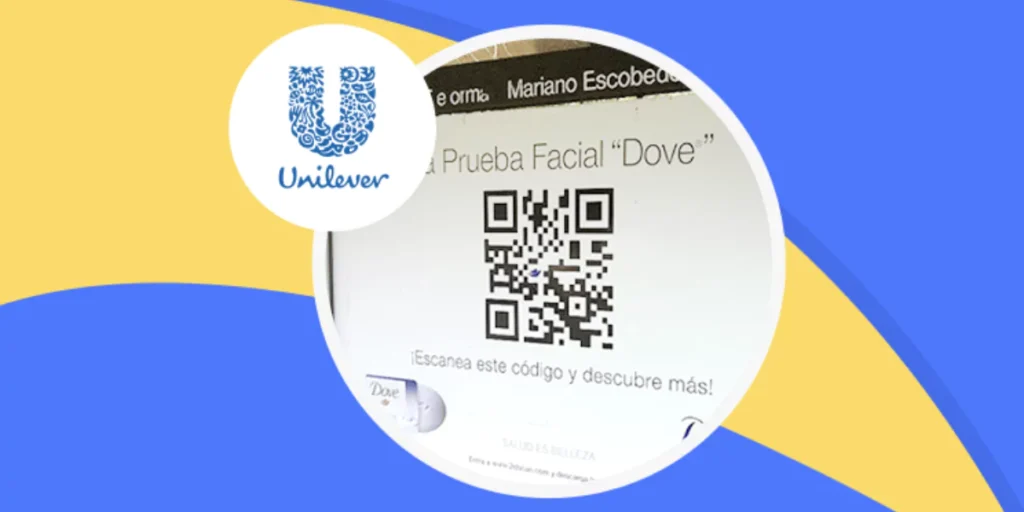
The QR campaign named “Know Your Product” concentrated on using QR Codes in bus stands and metro stations.
These QR Codes served as digital gateways, offering a range of information beyond the usual sales pitch.
Upon scanning the QR Code with their smartphones or tablets, customers were directed to a dedicated webpage containing comprehensive details about the product’s ingredients, manufacturing processes, and environmental impact.
At the heart of this initiative lies a commitment to transparency. From ingredient sourcing to rigorous testing procedures, Dove is devoted to sharing its narrative.
Unilever facilitates access to this information, empowering individuals to make informed choices about the products they welcome into their homes.
The marketing approach extended beyond mere product promotion. Customers had the opportunity to engage directly with Unilever through a specialized website.
They could share comments, pose questions, and even provide suggestions for improvements. By actively listening to and addressing customer concerns, Unilever fosters a sense of community and instills confidence in its relationship with its customers.
2. Starbucks’ loyalty program for customers
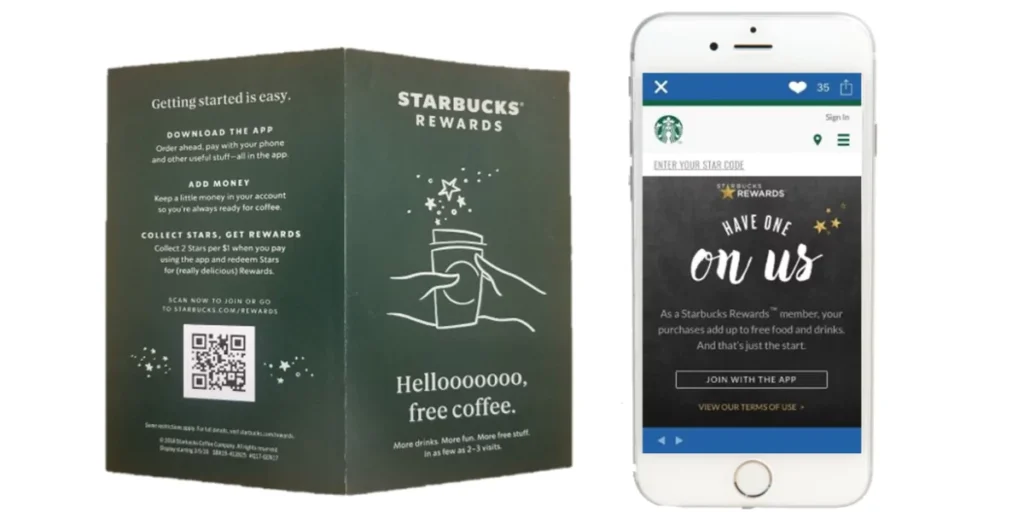
Starbucks, a globally recognized coffee brand, has a track record of employing inventive marketing strategies.
Their utilization of QR Codes in the loyalty program was a particularly effective technique. By scanning the code with their mobile devices, customers easily earn incentives and discounts for subsequent purchases.
This seamless connection allows customers to engage with the brand and avail themselves of additional benefits.
In-store, Starbucks also implemented QR Codes to enhance the personalized experience. Customers could scan the QR Codes positioned next to each product to access detailed information about various coffee blends.
Armed with this information and guided by their preferences, customers could make more informed decisions.
3. Pepsi’s Superbowl campaign
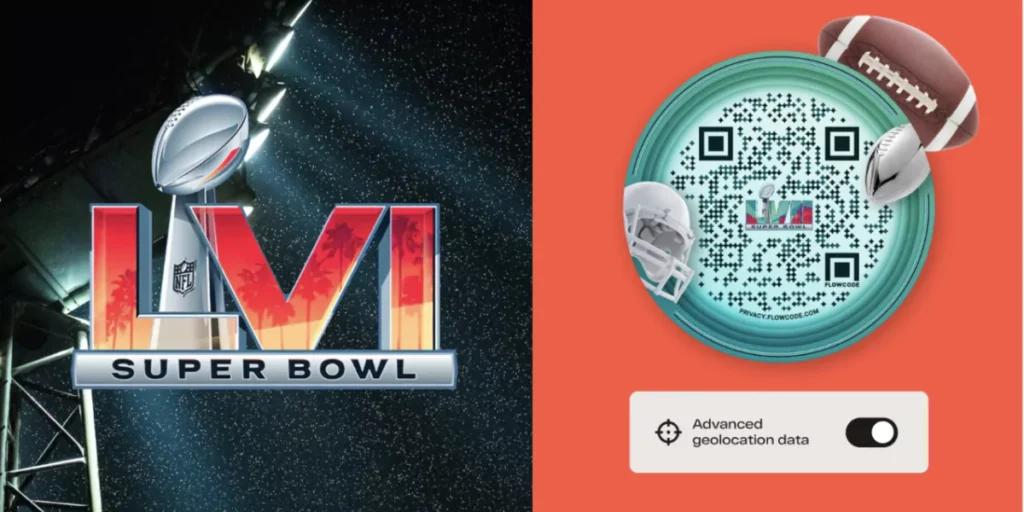
Pepsi has used QR Codes in its marketing strategy on multiple occasions. In a notable instance during Super Bowl LVI, Pepsi effectively integrated QR Codes into its promotional efforts.
The company featured an advertisement concluding with a QR Code, encouraging viewers to scan it and access a dedicated Show app for augmented reality photo sharing.
By using a clear call-to-action and offering a unique incentive to those who scanned the code, Pepsi successfully captivated its audience in a novel and interactive manner.
This not only sparked interest in their products but also provided valuable insights into consumer preferences and behaviors.
4. Love break lingo campaign by Nestle
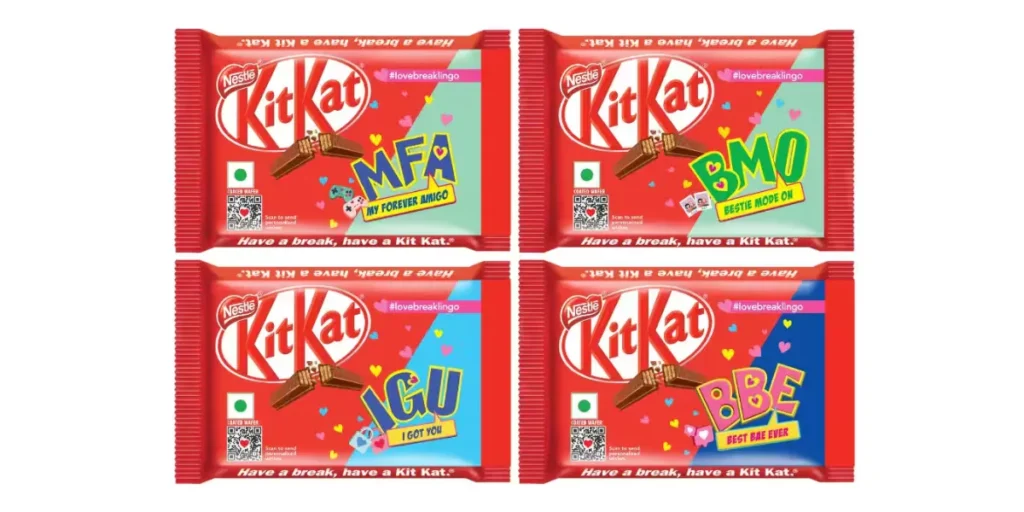
Nestle’s Love Break Lingo campaign set a new standard for QR Code marketing, showcasing a clever integration of QR Codes onto their limited edition KitKat wrappers.
This initiative aimed to resonate with young adults seeking a playful and interactive way to express their emotions.
Each KitKat wrapper featured a unique QR Code, and upon scanning, users were redirected to WhatsApp using the WhatsApp Business API.
The scanned QR Codes unveiled a variety of messages, ranging from cute love notes to cheesy pick-up lines, adding delight and intrigue for customers.
Using an AI chatbot, users could then craft personalized messages for their loved ones, selecting from categories like Bestie, Bae, Crush, Buddy, and more.
Nestle effectively transformed a simple chocolate bar into an enjoyable experience filled with laughter and romance through its innovative use of QR Codes.
This approach highlighted how the integration of technology can enhance traditional marketing methods, creating memorable and engaging experiences.
What worked well for Nestle? They successfully connected with their audience on an emotional level by tapping into the universal language of love.
Consumers eagerly sought out KitKats in anticipation of discovering hidden messages, adding an extra layer of enjoyment through the elements of surprise and anticipation.
5. HerShe campaign by Hershey’s
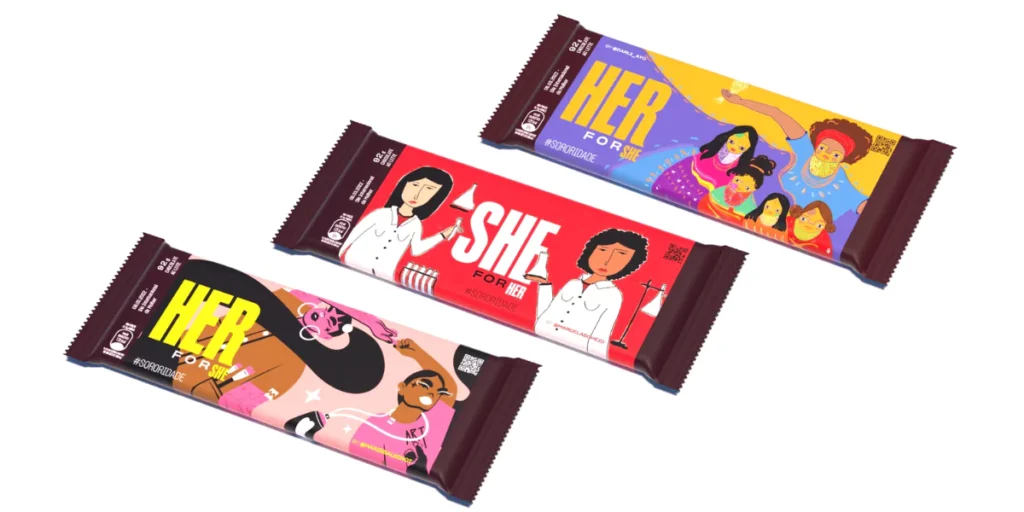
Hershey’s HerShe campaign serves as a remarkable example of effectively using QR Codes to engage and connect with customers.
Customers were prompted to scan QR Codes on Hershey’s bars, granting them access to inspirational videos.
The videos featured successful women as part of a campaign dedicated to celebrating women’s empowerment.
This initiative proved highly effective by resonating with the emotions of the target audience.
Given the strong sentiments surrounding women’s empowerment, Hershey’s adeptly tapped into this enthusiasm through their impactful HerShe campaign.
Moreover, Hershey’s enhanced the customer experience by using video content.
Rather than simply reading about the success stories, customers had the opportunity to personally meet and hear from these extraordinary women, resulting in a more immersive and engaging interaction.
Generate a QR Code For Your Unique Case
START TODAY!
F. Tips to customize QR Codes
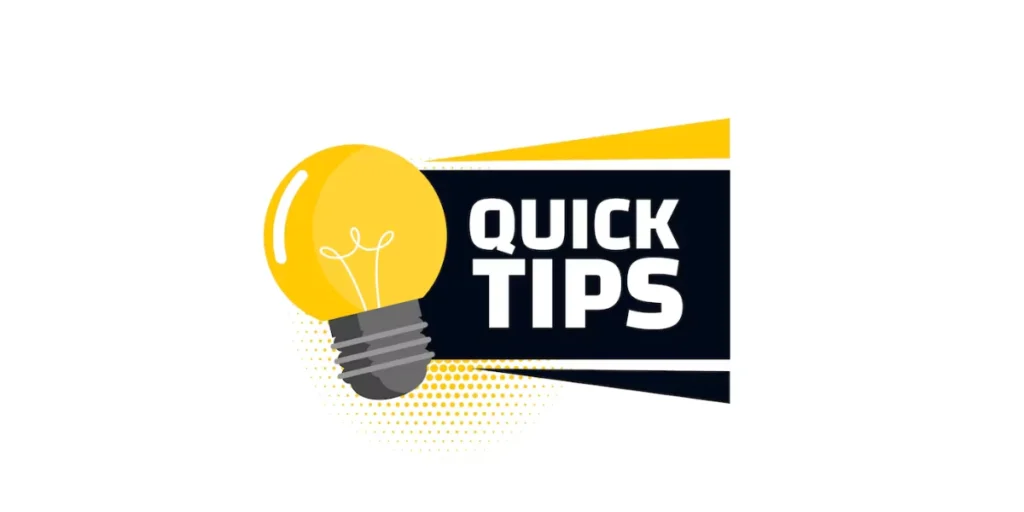
You now know that customizing QR Codes works, as it did with big brands and their campaigns. Customizing QR Codes can be a creative way to make them more visually appealing or aligned with your brand.
Here are some tips for customizing QR Codes:
1. Color customization
Experiment with different colors for the QR Code itself and the background. Make sure there is enough contrast to ensure the code remains scannable.
2. Incorporate your brand colors
Use your brand’s color scheme to make the QR Code align with your overall branding. This can help in creating a consistent visual identity.
3. Add a logo or icon
Insert a small logo or icon in the center of the QR Code. Ensure that the logo does not obstruct the essential parts of the QR Code and that it remains scannable.
4. Custom shapes
Instead of a standard square QR Code, consider using custom shapes. However, it’s crucial to maintain the necessary elements that enable scanning.
5. Use a frame or border
Add a decorative frame or border around the QR Code to make it stand out. Ensure the frame doesn’t affect the scanning process.
6. Background patterns
Integrate subtle patterns into the QR Code’s background. These patterns should not overpower the QR Code’s essential elements.
7. High-resolution images
Use high-quality images for customization to ensure that the QR Code remains scannable. Low-resolution images may interfere with the scanning process.
8. Customizing data patterns
If you have a deep understanding of QR Code structure, you can experiment with customizing the data patterns within the code.
9. Test thoroughly
After customization, test the QR Code on various devices and QR Code scanners to ensure it remains functional. Some intricate designs may not be scannable on all devices.
10. QR Code generators with customization options
Use a QR Code generator that provides customization options. Some platforms allow you to easily customize QR Codes while ensuring they remain functional.
G. Best practices: Custom QR Codes

Customizing QR Codes can be a great way to enhance their visual appeal while maintaining functionality.
Here are some best practices to keep in mind when creating custom QR Codes:
1. Ensure scannability
The most important aspect is to ensure that the customizations do not compromise the QR Code’s scannability. Test the QR Code on various devices and with different QR Code scanners to confirm functionality.
2. High contrast
Maintain a high contrast between the QR Code and its background to ensure easy scanning. A good rule of thumb is to use dark colors for the QR Code on a light background or vice versa.
3. Choose appropriate colors
Use your brand colors wisely, ensuring they are aesthetically pleasing and do not interfere with the QR Code’s functionality. Vibrant and contrasting colors often work well.
4. Logo placement
If you’re adding a logo, place it strategically in the QR Code. The center is a common location, but be sure it doesn’t cover essential parts, especially the three squares in the corners that help with orientation.
5. Size matters
Your QR Code should be large enough to be easily scanned, even from a distance. However, avoid making it excessively large, as that might result in scanning issues.
6. Use high-quality images
If incorporating images or logos, use high-resolution graphics to maintain clarity. Low-quality images can hinder scannability.
7. Be mindful of encoding capacity
Remember that the more data you encode in a QR Code, the denser the pattern becomes. This can affect scannability, so balance customization with the amount of data you need to encode.
8. Avoid distortion
Avoid distorting the QR Code. Always maintain the square shape, as distorting it can affect scanning accuracy.
9. Test across devices
Test your customized QR Code on various smartphones, tablets, and QR Code scanning apps. Compatibility can vary, so ensure it works seamlessly on different platforms.
10. Provide a call-to-action (CTA)
If the QR Code leads to a website or specific content, include a clear call-to-action nearby to encourage people to scan the code.
11. Choose the right QR Code type
Depending on your use case, choose the right QR Code. There are various types for different purposes, such as website links, plain text, business cards, and more.
12. Backup with a standard QR Code
If the customized QR Code is for promotional or branding purposes, consider providing a standard QR Code as well. This ensures that individuals without a compatible QR Code reader can still access the information.
13. Legal considerations
Ensure that your customization adheres to legal standards and guidelines. Some industries or regions may have specific regulations regarding QR Code usage.
H. FAQs: Custom QR Code

1. How to create a custom QR Code
To create a custom QR Code using Scanova, start by visiting the Scanova website and either sign up or log in to your account.
Choose the QR Code type based on your needs, such as URL or vCard, and input the relevant data.
Optionally, customize the QR Code’s design by adjusting colors or adding a logo.
Once configured, generate the QR Code and download the image to your computer.
It’s advisable to test the QR Code with a scanner to ensure accuracy. Finally, deploy and share the QR Code in your marketing materials or other relevant platforms.
2. Can a QR Code be of any shape?
Traditionally, QR Codes are square-shaped and consist of black squares arranged on a white background.
The square shape is a fundamental characteristic of QR Codes and is integral to their functionality. The design and layout of a QR Code are standardized to ensure that scanners can reliably read the encoded information.
While the standard QR Code is square, there have been creative attempts to incorporate QR Codes into more complex and artistic designs.
However, it’s crucial to note that deviating significantly from the square shape or altering the fundamental structure may compromise the QR Code’s functionality.
Non-standard shapes, colors, or designs might hinder the ability of QR Code scanners to accurately decode the information.
Suppose you need a QR Code to blend with a specific design or fit a particular shape. In that case, you can consider placing the QR Code within a custom-designed container or incorporating it into a graphic element while ensuring that the essential square structure is preserved.
Always test any customized QR Codes to ensure they can be reliably scanned by common QR Code readers.
3. Can I make a QR Code circular?
Yes, you can make a circular QR Code. Read this guide to know more.
4. Can a QR Code be any color?
Traditionally QR Codes consist of black squares on a white background, but with Scanova, you can customize your QR Code’s colors according to your preference.
5. Do QR Codes expire?
QR Codes themselves do not have an inherent expiration, as they can be used indefinitely once generated.
However, the information encoded within, such as URLs, may become outdated over time, affecting the QR Code’s relevance.
Dynamic QR Codes allow for updates without regenerating, but the longevity of a QR Code’s usefulness depends on the availability and maintenance of the linked content.
Additionally, QR Codes on printed materials may deteriorate, impacting their scannability.
Regular checks and updates are advisable, particularly for time-sensitive or dynamic information.
Summing Up
As we wrap up this exploration, consider the impact a well-designed, custom QR Code can have on your audience.
Whether blending seamlessly with your brand, delivering dynamic content, or injecting innovation into materials, the customization journey is yours to own.
If you’re still reading, you’ve learned everything about different QR Code types. If you have any questions, let us know in the comments.
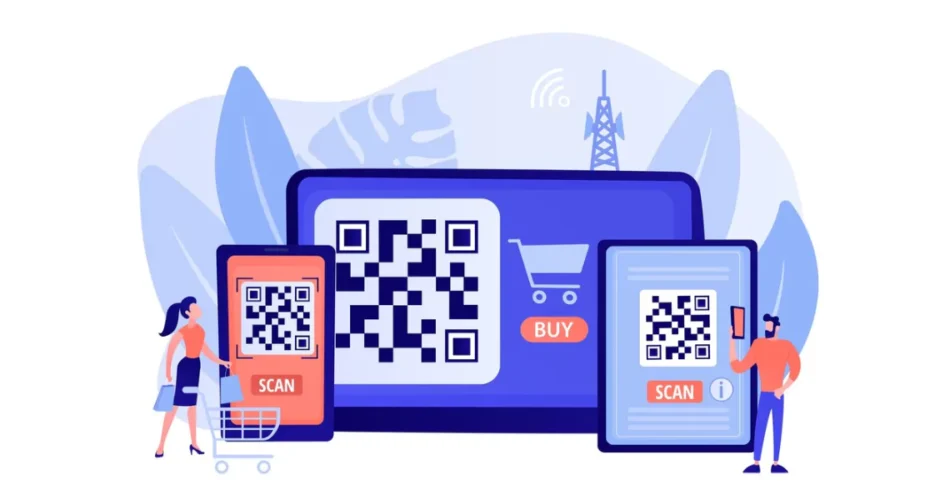
Hi I need qrcode
Hey!
To create one, you can go to a QR Code generator and get started with creating a suitable QR Code for your use case.
Here’s a detailed guide on how to do this: https://scanova.io/blog/how-to-make-qr-codes/
Thank you…
Hi – when you export these QR codes (say in PNG format), what’s the resolution? I’m interested in printing them on t-shirts and the printer wants 300dpi with a transparent background. Is that possible?
Thanks
Hey,
You can select the resolution while exporting the QR Code image. We recommend downloading the QR Code in vector formats such as SVG, EPS, or PDF for print purposes. It helps maintain the image quality no matter how much you zoom-in or resize it.
cool site. Thanks for showing us.
We’re glad you liked the article.
If you sign up for the free trial period, and you don’t subscribe, what happens to the QR codes that get created? Will they no longer work?
Hi Jocelyn,
The QR Code stops working after the free trial period. To keep it working, one needs to purchase a subscription.
Hope this helps.
You have actually gone above and also past in developing a extensive resource of info that any individual can take advantage of!